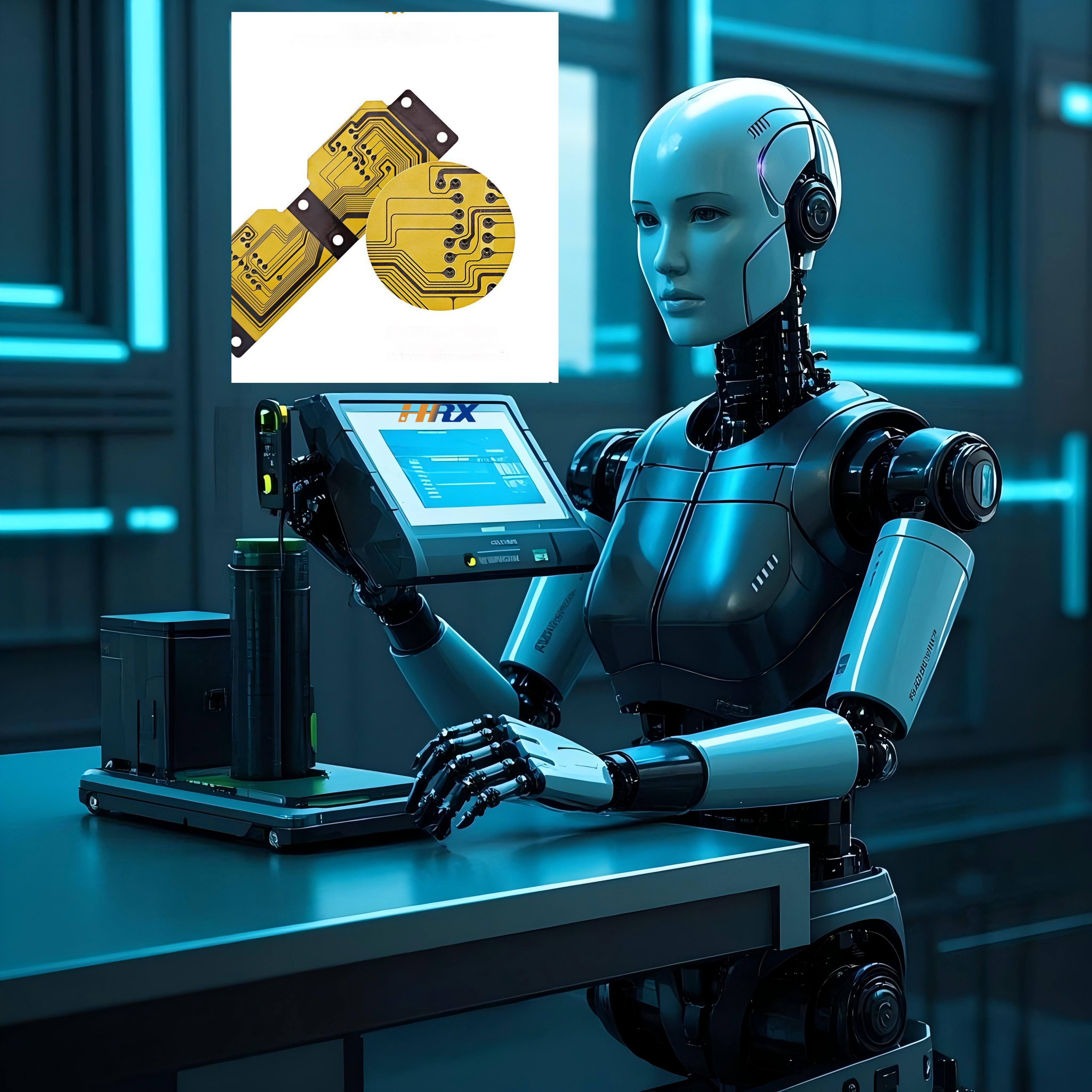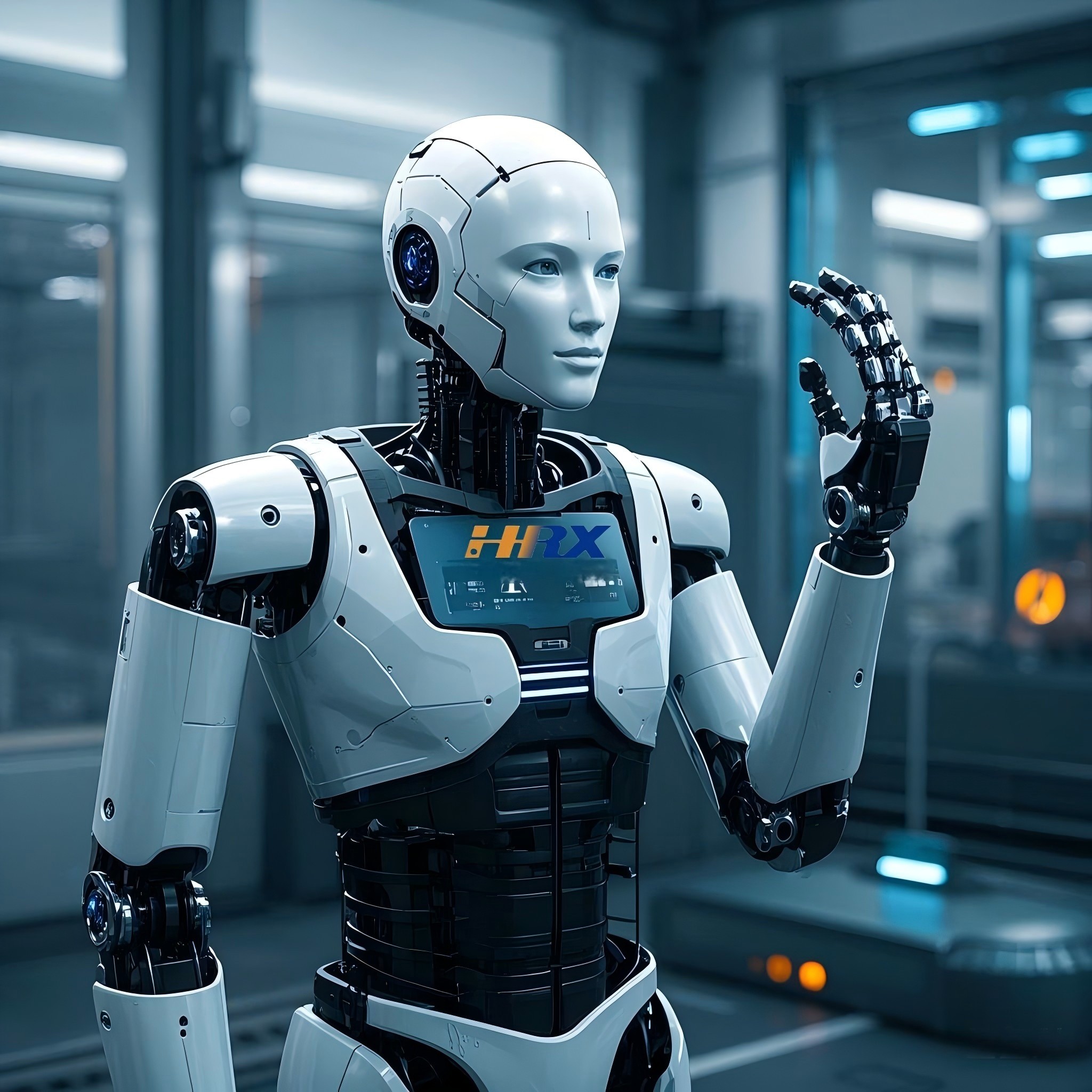Search
The Rising Star FPC's Application in the Thriving Humanoid Robot Realm
- Feb 17,2025
-
Share
In the dynamic landscape of emerging technologies, the humanoid robot market is experiencing a meteoric rise. As these intelligent machines become more integrated into various aspects of our lives, from home assistance to industrial automation, the demand for components that can support their complex functionality and sleek design is surging. Among these essential components, Flexible Printed Circuits (FPCs) have emerged as a game - changer, especially high - precision, multi - layer FPCs with fine - pitch traces and high - density interconnect (HDI) capabilities.

The Pivotal Role of High - Precision FPCs in Humanoid Robots
High - precision FPCs are the unsung heroes within consumer - grade humanoid robots. In the realm of sensing and execution, they act as the vital neural pathways. Tactile sensors, which enable the robot to "feel" its environment, and the actuators that bring its movements to life, rely on FPCs with low - loss dielectric materials for seamless communication. These materials ensure minimal signal attenuation, allowing for accurate and rapid data transfer between components. For instance, when a humanoid robot is tasked with delicately picking up an object, the FPC with impedance - controlled traces ensures that the tactile feedback from the fingertips is rapidly transmitted to the control unit, which then precisely adjusts the grip strength.
Moving on to the physical structure, the limbs, torso, main torso, and head of a humanoid robot are complex assemblies with a multitude of electrical components. FPCs with flexible copper clad laminates (FCCLs) and coverlay materials are perfectly suited to navigate through these intricate areas. In the limbs, they can bend and stretch with the joints, powering motors and sensors alike. The use of roll - to - roll (R2R) manufacturing processes for these FPCs enables high - volume production while maintaining consistent quality. In the head, they connect high - definition cameras, microphones, and other sensors, allowing for real - time data transfer and processing. The value of these FPCs is not only in their functionality but also in their ability to contribute to the overall compactness and efficiency of the robot, making them a high - value addition to the manufacturing cost.
Shenzhen Huaruixin Electronics Co., Ltd.'s Strategic Approach
1. Innovation - Driven R & D
Shenzhen Huaruixin Electronics Co., Ltd. is at the forefront of FPC innovation for the humanoid robot market. The company invests heavily in research and development, constantly exploring new materials and manufacturing techniques.
Advanced Material Exploration: They are delving into the development of next - generation flexible materials such as liquid crystal polymer (LCP) and polytetrafluoroethylene (PTFE) - based substrates. These materials offer superior electrical properties, including low dielectric constant and dissipation factor, which are crucial for high - speed data transfer between the robot's components. Additionally, they are focusing on improving the thermal stability of the materials through the use of thermal conductive adhesives. In a humanoid robot, components can generate heat during operation, and the FPC material must be able to withstand these temperature fluctuations without degrading in performance.
Cutting - Edge Manufacturing Processes: Huaruixin is pioneering advanced manufacturing processes such as laser direct imaging (LDI) and additive manufacturing for FPC production. LDI allows for the creation of ultra - fine circuit patterns with high precision, enabling the production of FPCs with extremely small line and space dimensions. Additive manufacturing techniques, on the other hand, offer the possibility of creating complex 3D FPC structures, which can better fit the unique geometries of humanoid robot components.
2. Tailored Solutions for Diverse Needs
Understanding that each humanoid robot design is unique, Huaruixin offers highly customized FPC solutions.
Early - Stage Collaboration: The company's design team engages with humanoid robot manufacturers from the very beginning of the product development cycle. By collaborating closely, they can gain a deep understanding of the robot's specific requirements, such as the layout of sensors, the power distribution needs, and the movement patterns of different body parts. This information is then used to design FPCs with optimized layer stack - up and routing strategies.
Function - Oriented Design: For example, for the head of a humanoid robot, which is typically packed with various sensors for perception, Huaruixin designs FPCs with high - speed differential pairs and shielding layers. This ensures that the visual data from cameras and audio data from microphones are transmitted quickly and accurately to the robot's processing unit without interference. For the limbs, FPCs are designed with bend - radius optimization and strain - relief features, making them highly flexible and durable, able to withstand the constant bending and stretching that occurs during movement.
3. Stringent Quality Assurance
Quality is non - negotiable for Huaruixin, especially when it comes to FPCs for humanoid robots.
State - of - the - Art Testing: The company is equipped with advanced testing equipment, including automated optical inspection (AOI) systems with high - resolution cameras and X - ray inspection machines for detecting internal defects. In addition, they use time - domain reflectometry (TDR) for impedance testing to ensure that the electrical properties of the FPCs meet the strict requirements for high - speed data transfer in humanoid robots.
Comprehensive Quality Management: Huaruixin has implemented a rigorous quality management system that adheres to international standards such as ISO 9001 and IPC - 6013 for FPC manufacturing. This system covers every stage of the production process, from raw material sourcing to the final product inspection. Regular quality audits and continuous improvement initiatives are in place to maintain and enhance the quality of their FPCs.
Key Considerations in FPC Application for Humanoid Robots
1. Compatibility and Integration
Electrical Compatibility: FPCs must be electrically compatible with all the other components in the humanoid robot. This means that they should have proper signal integrity, impedance matching, and power distribution characteristics. For example, when integrating FPCs with high - speed communication modules in the robot, techniques such as controlled impedance routing and signal isolation are essential to ensure reliable data transfer.
Mechanical Integration: The physical design of the FPC must be in harmony with the mechanical structure of the robot. The FPC's flexibility, thickness, and attachment methods need to be carefully considered. In areas where the robot's body parts move, such as joints, the FPC should be able to bend and flex without getting damaged or causing mechanical stress on other components. The use of flexible connectors and strain - relief pads can help improve mechanical integration.
2. Durability and Reliability in Dynamic Environments
Fatigue Resistance: Humanoid robots are constantly in motion, subjecting their internal components to repeated mechanical stress. FPCs need to be highly fatigue - resistant. They must be able to withstand thousands of bending and stretching cycles without breaking or experiencing a degradation in electrical performance. This requires the use of high - quality materials, proper design of bend areas, and advanced manufacturing processes that can enhance the FPC's durability.
Environmental Resilience: Depending on the application, humanoid robots may operate in various environments, including dusty, humid, or high - temperature conditions. FPCs need to be designed to withstand these environmental factors. For example, in industrial settings, FPCs may need to be coated with a conformal coating for dust - proof and chemical - resistant properties, while in home - based applications, they should be able to handle normal humidity levels without corrosion.
3. Future - Proofing for Technological Advancements
Scalability for New Features: As humanoid robot technology continues to evolve, new features such as more advanced sensor arrays, improved artificial intelligence algorithms, and enhanced power management systems will be introduced. FPCs need to be designed with scalability in mind, allowing for the easy integration of these new components and features. This could involve the use of modular design concepts and the provision of additional circuit traces or mounting points for future upgrades.
Keeping Pace with Industry Standards: The humanoid robot industry is evolving rapidly, and new standards and regulations are constantly emerging. FPC manufacturers need to stay updated with these developments and ensure that their products comply with the latest industry standards. This not only ensures the quality and safety of the final product but also helps in the wider adoption of humanoid robots in different markets.

In the exciting journey of humanoid robot development, Shenzhen Huaruixin Electronics Co., Ltd. stands out as a paragon of professionalism in the FPC industry. With its in - depth understanding of FPC materials, cutting - edge manufacturing processes, and unwavering commitment to quality, the company is well - positioned to meet the evolving needs of the humanoid robot market. We welcome all industry peers, new and old friends, to join the discussion and explore the endless possibilities of FPCs in the humanoid robot field.

Let’s talk! We’ll provide the perfect solution for you!
-
 Huaruixin Electronics mainly produces printed circuit boards as the core business, to provide customers with one-stop solutions for FPC/PCB production, components sourcing and Assembly.
Huaruixin Electronics mainly produces printed circuit boards as the core business, to provide customers with one-stop solutions for FPC/PCB production, components sourcing and Assembly. - WHAT WE DO — PCB Design Solutions — Flex PCB Production — Components Sourcing — FPC&PCB Assembly
- PRODUCTS — Single Sided Flexible Circuits — Double Sided Flexible Circuits — Multilayer Flexible Cirucits — Rigid-Flex Circuits — FPC Assembly — PCB Assembly
- CAPABILITY — FPC Capability — Rigid-Flex Capability — PCB Capability — Assembly Capability
- Copyright © 2024 Shenzhen Huaruixin Electronics Co., Ltd. All Rights Reserved.
- Design By BONTOP


